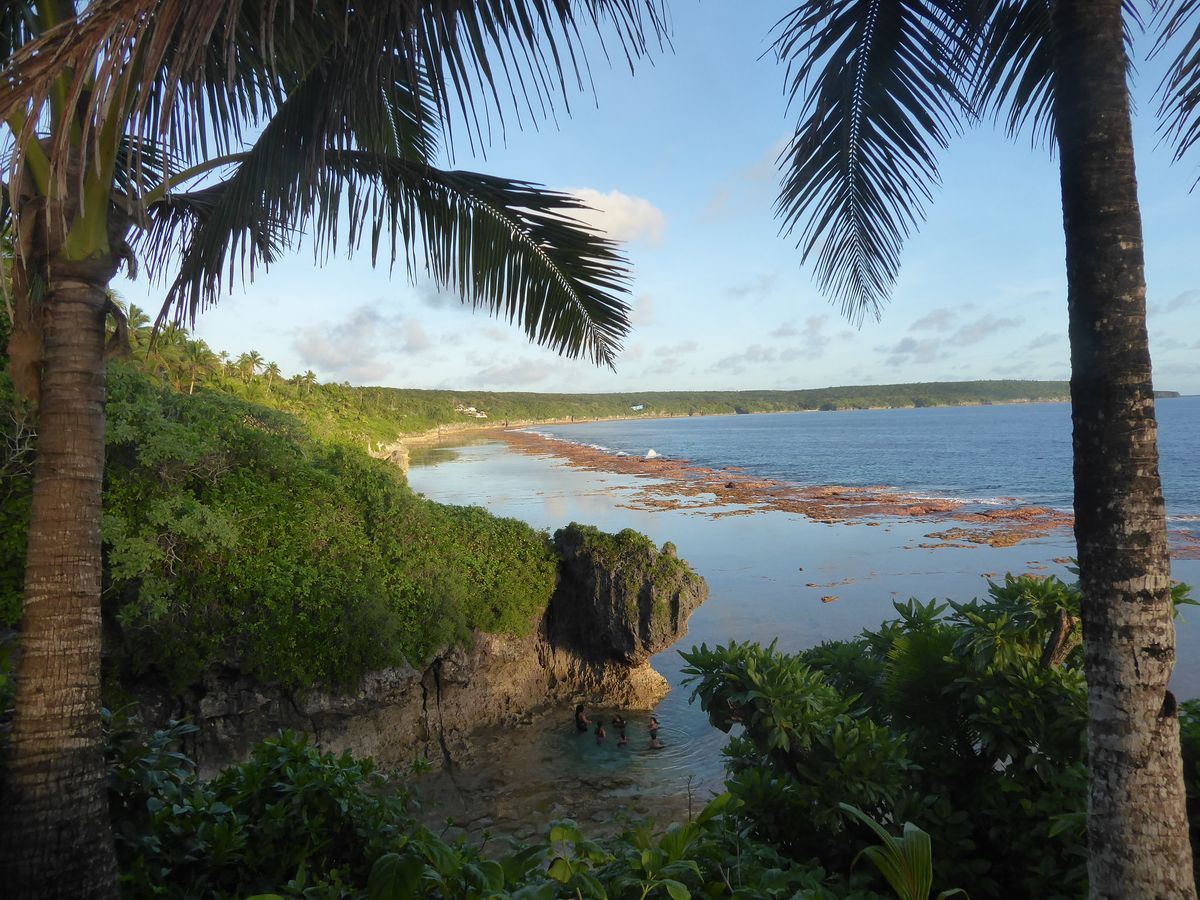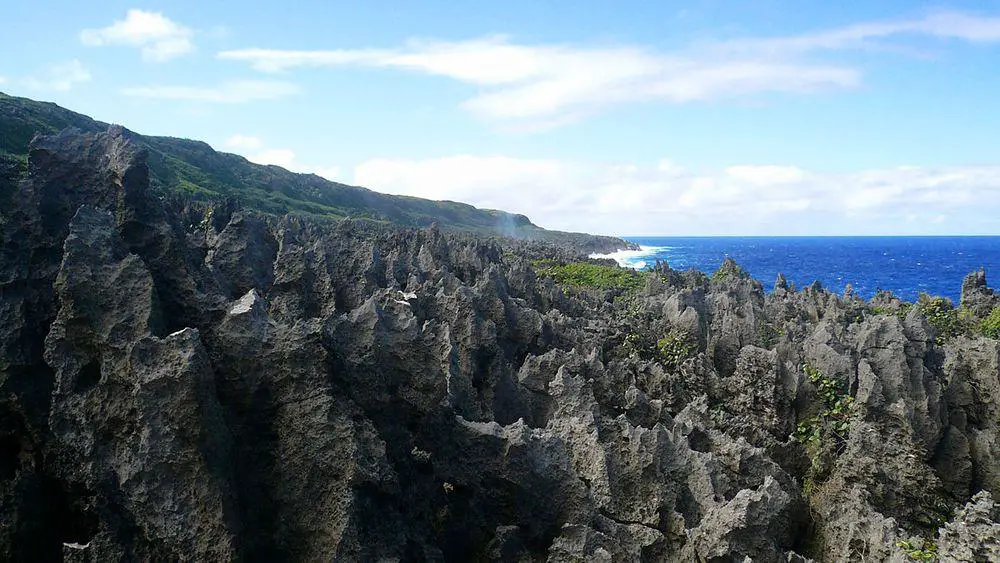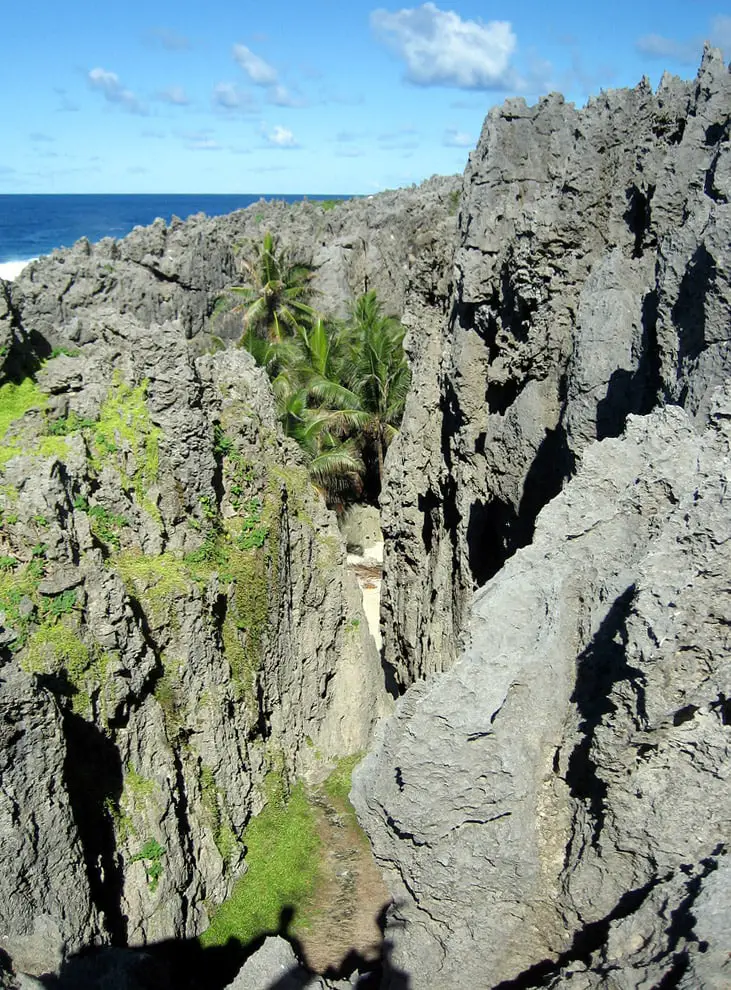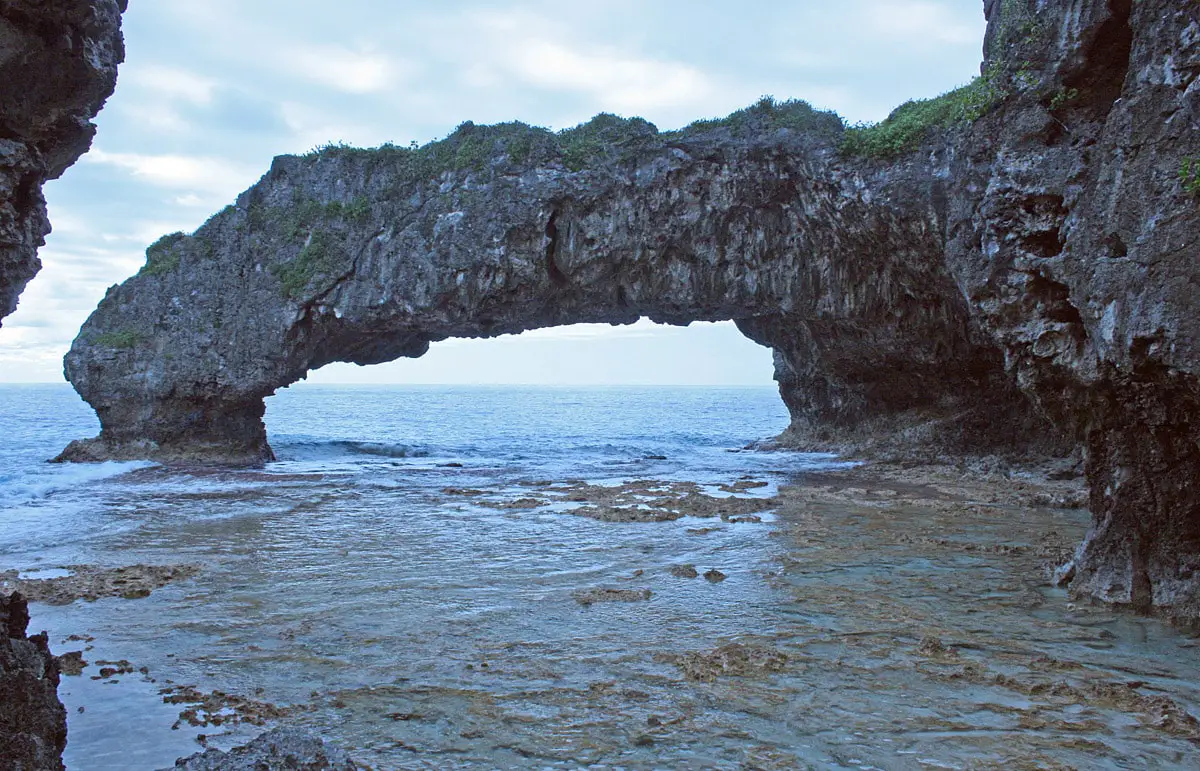Wondermondo 🢖 World 🢖 Wonders of Australia and Oceania 🢖 Wonders of Polynesia 🢖 Wonders of Niue
Territory
Wonders of Niue

 Highlights
Highlights
Niue is associated with New Zealand – but, nevertheless, this is an independent nation.
It is one of the largest coral islands in the world – 260 km² large. Here is no tourist hotspot – in fact, this island is experiencing unprecedented emigration – but, still, this is a tropical island with lots of charms.
The most amazing wonders of Niue are its unique caves and unbelievably lucid sea with lots of attractions for divers.
Map with the described wonders
If you see this after your page is loaded completely, leafletJS files are missing.
 Top 15 wonders of Niue
Top 15 wonders of Niue
Geological wonders
Karst landscape at Huvalu Forest
A belt of impressive karst landscape, consisting of thousands of upright, 5-8 m tall limestone peaks with sharp edges.

Ulupaka
Longer cave with beautiful stalactites and stalagmites. Here are located ancient cave shelters that were used in the 13th – 15th centuries.
Avaiki Cave
Legendary first landing place on the island. One cave is available through a narrow gorge, it reaches the coast. This cave has amazing stalactites and stalagmites. From the first cave is available another cave as well. This other cave has beautiful dripstone formations – giant stalactites hanging over a large pool. The pool with its lucid water resembles a giant aquarium with interesting marine life in it. The cave served as a shelter in the 13th – 15th centuries.
Paraso geothermal area
Large, impressive geothermal area with boiling mud lakes, hot springs, and colorful sediments.
Talava Arches and Caves
One of the major sights in Niue: a beautiful cave with three huge natural arches. After entering the cave, there are two exits – one towards the sea with one enormous natural arch visible (approximately 7 m high and 20 – 25 m wide), another – to a sinkhole with two other large natural arches. From the sinkhole are available some more caves. Sinkholes and arches have been formed by the collapse of the cave roofs. First seen by Captain Cook.
Togo Chasm
This chasm is located in an impressive karst landscape. Nearby is a natural arch and smaller caves with speleothems.

Vaikona Chasm
Impressive chasm with a cave towards the sea. In this cave, one should dive from one room to another.
Matapa Chasm
Gorge with a natural pool, and some 10 m tall walls. As one approaches the sea, the noise of waves in the chasm is overwhelming. Served as a shelter in the 17th – 20th centuries.
Palaha Cave
One of the biggest caves on the island, close to Avaiki Cave. Numerous smaller seaside caves are available through this cave.
Ana Mahaga Underwater Cave (Limu Twin Caves)
A diver can enter one of two vertical chimneys and, as he dives deeper, he reaches a cave that extends to the edge of the reef. Another impressive underwater cave is Dome which goes some 30 m under the mainland.
Anapala Chasm
Cave with a stream in it. The roof of this cave has partly collapsed. Inside is located a spring with good drinking water, it is used by local people since old times.
Biological wonders
Huvalu Forest
The most authentic part of the pristine tropical forest in Niue. Three areas in the central part of this forest are "tapu": off-limits to anyone.
Snake Gully
Less than 20 m long underwater cave. Here live numerous endemic Niue sea snakes (katuali (Laticauda schystorhyncha)) who on a regular basis rise up to breathe. These snakes have extremely toxic venom but are docile. At times hundreds of snakes can be seen. Here are living numerous other sea creatures as well.
Anakuli Cave
In this cave have been found remnants of two species of extinct birds, presumably endemic to Niue. One is a night heron Nycticorax kalavikai, and another – a rail Gallirallus huiatua. Found also remnants of the extinct "Niuafo’ou" Megapode (Megapodius pritchardii), whose remnants have been found also in Tonga.
Archaeological wonders
Anatoloa Cave
Possibly – a site of ritual burials in the past and a legendary abode of a powerful god. This monument of archaeology was a cave shelter and was used already 2000 years ago. Human bones.
 Recommended books
Recommended books
Niue: A History of the Island
This is the story of Niue, the world’s smallest self-governing nation, written by leading citizens of the country itself. The book outlines the origins and early history of a vigorous Polynesian people, and the changes which have come about as the result of contact with Christianity, commerce, and colonial government. The authors then describe the move towards independence, the situation in Niue today, and the prospects for the future.
Niue History and Culture: Who are Niue People, Their origin, Settlement, Governance, Politics, Environment, Travel and Tourism
The book has the information that serves the need for history, education travel, and tourism, providing you with the information on Government on Niue, Origin of Niue people, settlement, and pattern: For many Pacific Islanders, migration is a positive opportunity for individuals to obtain higher standards of living and material possessions not available in their homelands. Pacific states, like many small countries, have come to depend increasingly upon larger metropolitan states such as New Zealand.



